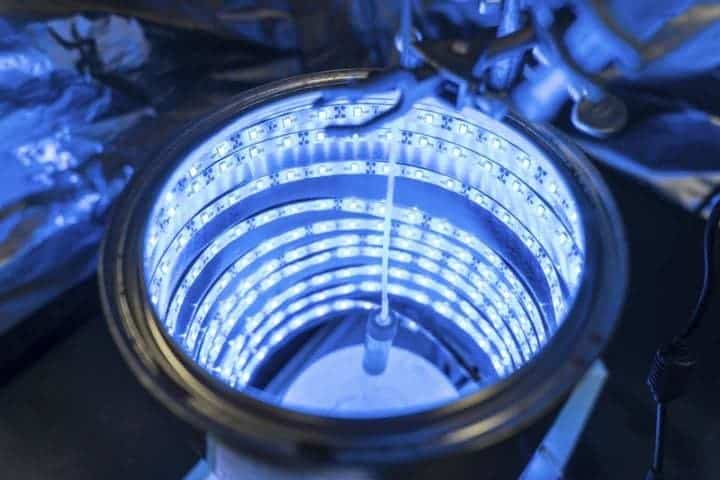A research team from the University of Central Florida has found a way to trigger photosynthesis in an inexpensive synthetic material. The technology could be used to scrub the air clean and produce ‘solar’ fuel from atmospheric CO2.

Image credits Bernard Wilchusky.
Scientists the world over have been trying to re-create the process that plants rely on to feed in a synthetic material for years now, with some success. Photosynthesis-like reactions can be maintained in common materials such titanium dioxide under higher-energy UV light. But, since the lion’s share of energy released by the Sun lies in the violet to red wavelengths, the challenge lies in finding a way to keep it going under visible light. Up to now, we’ve known comparatively few materials that can do so, and they’re very expensive (think platinum or iridium compounds), keeping them far away from commercial applications.
Uribe-Romo, a chemistry professor at the UCF, and his students may bring artificial photosynthesis into the market. The team has found a way to trigger the reaction in an inexpensive synthetic material, offering a cost-effective way to turn atmospheric CO2 into fuel.
The system uses a class of materials known as metal-organic frameworks (MOFs) to break down the CO2 into its two compounds. Uribe-Romo’s MOF was constructed from titanium with a pinch of organic molecules to act as light-harvesting points and power the reaction. These molecules, called N-alkyl-2-aminoterephthalates, can be tailored to absorb specific wavelengths (colors) of light when incorporated in the MOF — the team went for blue.
They tested the system under a photoreactor — a battery of blue LED lights which looks like a tiny tanning bed — constructed to mimic the sun’s blue wavelength. Controlled amounts of CO2 were pumped into the photoreactor, and the MOF scrubbed it out then split it into two reduced carbon compounds — formate and formamide.
“The goal is to continue to fine-tune the approach so we can create greater amounts of reduced carbon so it is more efficient,” Uribe-Romo said.
He says that the next thing the team will be looking into is how to adjust their material so it can sustain the process under other colors of light. If they can pull it off, the system will gain hugely in versatility and could grow to become a significant carbon sink. Stations could be set up near CO2-producing areas, such as power plants, to capture the gas and use it to produce energy which could be fed back into the system. Or it could be fashioned into rooftops that homeowners can install to clean their neighborhood’s air while saving up on power bills.
“That would take new technology and infrastructure to happen,” Uribe-Romo said. “But it may be possible.”
The full paper “Systematic Variation of the Optical Bandgap in Titanium Based Isoreticular Metal-Organic Frameworks for Photocatalytic Reduction of CO2 under Blue Light” has been published in the Journal of Material Chemistry A.






